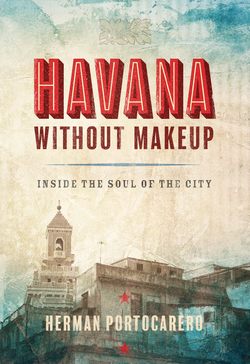Читать книгу Havana without Makeup - Herman Portocarero - Страница 28
На сайте Литреса книга снята с продажи.
Оглавление21.LA LIBRETA (THE RATION BOOKLET)
The good money, bad money situation attacked the utopia where it hurt most: by recreating social class through cash, and by slowly undermining the protection of the weakest and most vulnerable members of society – often the ones who had blindly thrown in their lot with the ideals of the Revolution.
The U.S. dollar – the actual greenback – became legal tender in Cuba in the mid-1990s. As we have seen, this was a clever move to undercut the black market. Many essential products were scarce in the 1990s, and a thriving black market threatened to shift such products as were available more and more to the clandestine dollar economy.
For a while, the U.S. dollar coexisted with the same-value peso convertible and the moneda nacional. The triple monetary standard was managed very competently, and the short-term effects were good.
The exchange rate of the moneda nacional to the dollar improved dramatically (from about 150 to one to about twenty five to one), and inflation was brought under control. The free access of Cubans with dollars (from remittances or the margins of the nascent tourist industry) to dollar retail stores helped make sure that the new sources of income were spent in such a way as to ultimately flow into government coffers, as retail commerce in new stores and supermarkets remained state-controlled.
Thus, the dollar economy could subsidize the peso economy. Newly introduced mercados agropecuarios (produce and livestock markets) allowed state-controlled agriculture and especially the Armed Forces to sell excess produce directly to the public after filling centrally imposed quotas, likewise in non-convertible currency.
These measures saved the island from malnourishment with some help from NGOs like the Catholic charity Caritas, OXFAM, and even the B’nai B’rith community. But malnutrition among the elderly and in some rural pockets may become a growing risk.
The dollar was taken out of circulation and fully replaced with the convertible peso in 2004. This again was done competently and seamlessly, and the country never saw hoarding of good cash or hyperinflation. But the long-term effects of a double monetary standard could not be avoided.
By 2010, the slow erosion of the moneda nacional economy became tangible. The sliding of more and more essential products into the convertible currency market proved ultimately unavoidable. Salaries in the state sector – still the largest employer – remained and still remain denominated in non-convertible pesos.
The overall effect of these two sets of facts was growing social inequality.
The purchasing power of an average state salary in the convertible peso market became painfully low. State-employed citizens had to work several extra jobs, often way below their level of qualification, to make ends meet. Worst off were state pensioners relying exclusively on the libreta for their meager livelihood.
There was public debate about this situation, but it tended once more to be couched in highbrow macroeconomic jargon. No one dared to remind themselves or the government of the simple truth: that the double money situation had been introduced to recuperate the black market, that it had worked up to a point, but that it could not be upheld forever. It would require more fundamental changes: in the labor market, by introducing salaries with real purchasing power, and in bookkeeping and national statistics, where the use of the double standard created artificial economic results.
The double monetary standard makes it indeed very difficult to gauge the real economic performance of the country. In state-controlled enterprises (the vast majority), both currencies are used for statistics in a one-to-one exchange rate, thus hiding the enormous discrepancies between the cost of imported inputs and the low real prices of the end products, in other words, hiding enormous and continuous losses. There is, therefore, no reliable system of national accounts, making it also very problematic for Cuba’s foreign partners and friends to help where it’s most needed.
But in spite of all this, the libreta and the bodega created a culture of entitlement and the expectation that the State will always care for you, which will be very difficult to erase after two generations. Lining up at the neighborhood bodega (there are 30,000 of them island-wide) is simply part of being Cuban, no matter how disappointing the rations are that you’ll get when your turn comes up, cuando te toca. What you’ll get is now often down to some rice and beans, bread and eggs. Eggs are always in good supply, even though a recently exposed scandal supposedly caused eight million of them to disappear on the black market. Officially, the libreta still provides 30 percent of a balanced diet, but anyone who knows the country well will dispute that. Church workers, familiar with situations in the provinces, put the figure as low as 10 percent.
Yet the bodega culture remains a part of cubanía. It’s a common courtesy in Havana, even when approaching an ATM, to enquire quién es el último, who is the last in the line, so as to take your rightful place. This now begins to coexist with the opposite culture of elbowing your way to the top, even to keep your belly full.
